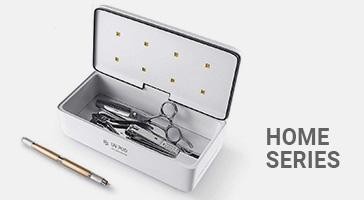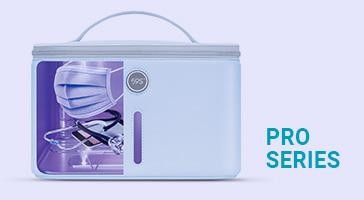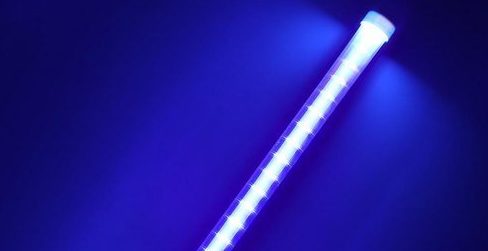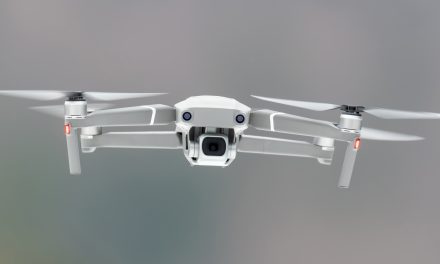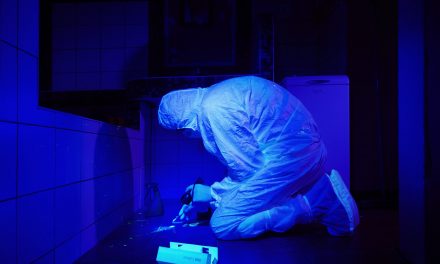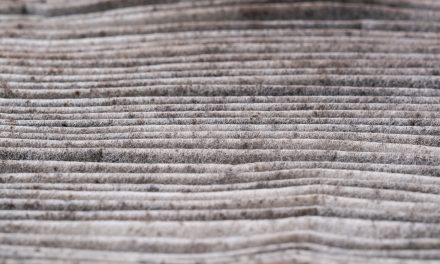Stopping Disease Contraction by Cleaning with Ultraviolet Light (UV light)
The coronavirus pandemic was a global and unprecedented public health emergency that affected many coun
tries. The pandemic is caused by the coronavirus of the SARS virus, which spreads rapidly from person to person. Since the SARS outbreak, coronaviruses have been identified in a wide range of animals and humans. The coronavirus is also spread by droplets released from the noses of respiratory distress patients. In order to control the transmission and incidence of this contagious disease, governments must have a plan in place for treatment and prevention.
The ultraviolet light sanitizing method is being used to help curb the spread of the coronavirus. Keep reading to know-how.
HOW ULTRAVIOLET LIGHT WILL HELP STOP THE SPREAD OF CORONAVIRUS
The definition of ultraviolet light is it’s a type of electromagnetic radiation that can be used to sterilize a surface. The
ultraviolet light use in the fight against coronavirus will help prevent the spread of the disease, as it will kill the virus and other germs on surfaces. The germicidal rays kill microorganisms such as viruses, bacteria, fungi, and spores.
Ultraviolet light will also destroy the DNA of viruses, thus preventing them from replicating and causing infection. In addition to killing germs, ultraviolet light can also be used to destroy microbes that may cause mild infections, such as yeast, fungi, and bacteria.
Ultraviolet (UV) light
Ultraviolet light wavelength is shorter than visible light. Can humans see ultraviolet light? Well, ultraviolet radiation is invisible to humans, but some animals can see it in the form of fluorescence, which also can be used to disinfect surfaces.
UV light can penetrate most plastics, which is very useful for disinfection on plastic items, such as toys, bottles, and food containers. UV light can be used to kill viruses that cause diseases like HIV, hepatitis, influenza, and herpes. It can also kill bacteria that cause diseases like tuberculosis, typhoid, and staphylococcus. As a bonus, UV light is non-invasive.
Ultraviolet radiation can also disinfect surfaces not covered by plastics, like stone, wood, and glass. It can perform thorough disinfection on surfaces not covered by water, such as metal and paper.
Ultraviolet light therapy treats many skin diseases, like psoriasis and eczema. Ultraviolet radiation is also helpful in purifying water since it can kill bacteria that cause cholera and dysentery.
Ultraviolet light spectrum
UVA is the most common and has the shortest wavelength. UVB is slightly longer and is used for tanning beds. UVC has the longest wavelength and is used to sterilize equipment. UVV is a type of radiation that comes from stars, not the sun or the ultraviolet light from the sun. The dose of UV light needed to inactivate a pathogen depends on the target’s type, concentration, and size.
Ultraviolet light is not so intense that it can kill a human being but rather weak enough to inactivate viruses and bacteria. Another critical factor for effective sterilization is the size of pathogens (or contaminants), the exposure time, and whether the target is a surface or within a liquid.
Knowing the UV spectrum gives an essential advantage for understanding how to kill pathogens in various environments. When ultraviolet light is used to kill pathogens, it can be in the form of a beam of light (often collimated or focused) or as non-directed ultraviolet radiation. Scientists have developed the concept of germicidal radiation to determine how UV light kills pathogens.
Ultraviolet-A light
UVA is the shorter wavelength ultraviolet radiation, which includes wavelengths from 320 to 400 nanometers. UVA light in this range can damage DNA and RNA, break down proteins into amino acids and cause singlet oxygen to be produced. The main concern with UVA light is its ability to break down proteins, leading to increased protein degradation in the body.
UVA radiation damages DNA and protein in the skin, breaking down collagen and elastin. This damage can lead to cell death which leads to premature wrinkling. Research has found that exposure to UVA can also cause inflammatory breakouts, leading to other skin problems.
Ultraviolet-B light
UVB is a shorter wavelength of light shown to cause the most skin damage. UVB ranges from 290 to 320 nanometers. This range of UVB can cause erythema or reddening of the skin. Theoretically, erythema can cause a “sunburn” sensation and has been proven to cause DNA damage in human cells. However, these effects are only present when light exposure is more significant than 200 nanometers. The UVB rays also play the most crucial role in causing skin cancers. The rays kill dangerous, disease-causing organisms on the skin’s surface.
Although UVB radiation effectively destroys some viruses, it will do little to stop the spread of Coronavirus. While it may be potentially harmful to organisms that the Coronavirus is present in, the impact of UVB radiation on humans remains minimal. This is because our skin contains melanin, a pigment that absorbs DNA radiation.
Ultraviolet-C light
UVC radiation is the most dangerous form of ultraviolet radiation. It has a wavelength of between 100 and 280 nanometers and can cause sunburns in sensitive areas or skin cancers in the long run.
Germicidal UV radiation is the other harmful form of UV found in sunlight. It is around 290 to 320 nm and has no burning effect on healthy skin. Instead, it causes the DNA molecules of the microorganisms in our body to be damaged and accelerate their death.
UV Germicidal Radiation
UV germicidal radiation is electromagnetic radiation used to sanitize water and kill harmful microorganisms. UV radiation is emitted when an atom loses an electron to a higher-energy charged particle, such as a photon, and talks that energy. Its wavelength is in the UV region of the electromagnetic spectrum. Water is opaque to UV radiation, meaning that most of it cannot penetrate through the surface. UV germicidal radiation can be used to remove microorganisms because it can penetrate glass and plastic containers. Viruses need to be destroyed via UV radiation before they can be transmitted from person to person or from animal to a human host through water or food.
Ultraviolet radiation is helpful as both a research tool and sterilizing technique. A UV germicidal irradiation machine can be used to kill bacteria, fungi, viruses, and other organisms. An example of an energy-saving innovation is the UV Germicidal Radiation. It will help in fighting against viral infections like coronavirus and influenza.
Germicidal UV light wavelength
The UV dose is the intensity of the light and how long it is exposed. The UV germicidal radiation does not kill all organisms that are sensitive to UV light but kills bacteria and viruses. Some viruses are resistant to germicidal rays, but continued exposure to high levels of UV radiation can eventually eliminate pests.
UV light cannot penetrate glass, so it is most effective indoors. This is a complex process for larger businesses because they have large indoor spaces with lots of glass and lights. Large buildings with many windows can be very costly to maintain and fail if there is not a proper control system beforehand.
UVD dose in UV germicidal radiation is expressed in units of W s/cm 2 or J/cm 2. The proper UV dosage is 25,000- 35,000 mJ/cm2. This will help to stop the spread of coronavirus and other viral infections.
Germicidal UV light eliminates infectious bacteria and viruses like the flu virus. It has an intensity of 10 mW/cm2 and an irradiance of 10 J/cm2. UV radiation has a wavelength of 254 nm, which is the longest among all light waves. The wavelength of UV germicidal light is between 100 and 315 nanometers. This range is essential to treat each volume part with a sufficient dose of UV radiation.
Is ultraviolet light safe?
You might wonder: “Are uv lights safe for constant use?” or maybe something like “Is it safe to be exposed to ultraviolet led light?”
UV rays are associated with skin cancer, sunburn, aging, and cataracts.
UV radiation is also known as ultraviolet light. UV rays are the most common radiation source but can also be dangerous.
Ultraviolet radiation is the form of light waves that falls between visible light and x-rays. It is not as strong as visible light or x-ray radiation, but it is more damaging to skin tissue. The wavelength of ultraviolet light significantly impacts the severity of the damage it can cause to human skin.
Increasing regulations concerning sources of UV light restrict ultraviolet light frequency and intensity. This restriction prevents exceeding a certain level, which may cause the spread of a virus.
UV radiation penetrates deeper into our bodies and affects the connective tissue. It also damages blood vessels increasing the risk of bleeding.
A new type of germicidal UV, far UVC, has been discovered. A bulb-shaped quartz lamp generates that. The lamp delivers up to 1000 watts of light in one hour using a wavelength in the middle range between UVB and UVA. It is considered to be a safe and healthy ultraviolet light.
Far UV-C
The far UVC irradiation kills pathogens without harming human health and killing bacteria and viruses. Far UVC is safe for skin exposure. The UVA radiation is not as intense as the UVB rays, and they can penetrate through clothing. It is essential to use the appropriate protection when using UV rays.
Researchers are experimenting with using UV radiation to stop the spread of viruses, as it is known that such wavelengths can penetrate deep into a cell and destroy the virus.
A UV portal is a device that emits far UVC radiation. This
technology will help stop the spread of coronavirus by killing harmful bacteria. An ultraviolet disinfection technology (UV disinfection) is potentially a promising intervention strategy to control the spread of coronavirus infections (HRV-C). The device has been developed by British scientists and is currently being trialed at hospitals in the UK. Since there are only isolated cases of infection, health authorities have demonstrated a willingness to adopt this technology.
Health officials are assessing the potential of a new commercial
ultraviolet light sanitizer for rooms they plan to introduce in hospitals, classrooms, and other educational facilities where vulnerable people may be exposed.
WHAT IS THE DIFFERENCE BETWEEN REGULAR UV TO FAR UV C LIGHT?
The difference between regular UV and far UVC is that the latter does not penetrate the skin. Distant UVC light is promising disinfection without harming human health. UV germicidal radiation, also known as far UVC, is the radiation type that kills most microorganisms directly or indirectly.
Does ultraviolet light kill viruses like Coronavirus?
The study found that when coronavirus is exposed to ultraviolet light, it becomes inactive and cannot spread as quickly. This could be used in hospitals for patients treated for coronavirus.
HOW CAN YOU USE YOUR HOME’S UV LIGHTS TO TREAT VIRUSES?
The UV lights in your home can be used to treat viruses, which is helpful if you have a cold or the flu. The light turns on and off at different frequencies that kill the virus. You can get a UV light at the drug store or online.
UV light from fluorescent tubes is already used in hospitals to sterilize equipment and surfaces. In the future, UV radiation can be used to stop the spread of coronavirus. Far-UV is in the range of UVA and UVB. Far-UV radiation can kill viruses like influenza, dengue, and hepatitis countertops.
WHAT ARE THE BENEFITS OF USING ULTRAVIOLET LIGHT AT HOME?
The benefits of using ultraviolet light at home are that it is a natural, free way to clean your house.
Ultraviolet light kills bacteria and viruses on surfaces such as countertops and floors. It also kills germs on your dishes, reducing the need for harsh cleaners. It’s green and easy (and way better than washing dishes with bleach).
Not to mention how convenient it is to maintain. Ultraviolet light bulbs do not need to be replaced very often. Ultraviolet C light bulbs are available for public consumption.
The U.S. Environmental Protection Agency has approved four types of germicidal light, but that still leaves room for improvements in germ-fighting technology.
What is ultraviolet light used for?
UV light has many uses, including UV disinfection, curing photosensitive materials, and the tanning industry. Ultraviolet radiation is used for sterilizing techniques and is used in the prevention of viral infections. The most common method is to irradiate a surface with UV light.
UV Germicidal radiation is a type of ultraviolet light that has been used in the past to treat various conditions such as acne and psoriasis. It is also used in fluorescent lamps, which are more energy-efficient.
Handheld ultraviolet light sanitizer wand
Ultraviolet light uses vary from cosmetic purposes to medical. It has been instrumental in sterilizing hands and surfaces, killing bacteria on fruit and vegetables, and preventing food spoilage. The device is hand-held and allows users to see if it’s safe to eat a particular fruit or make a drink by testing the water or other liquids. These days, there are even handheld sanitizers in the form of ultraviolet light sanitizer wands that can perform disinfection at any surface it comes in contact with.
Cleaning with ultraviolet light
A UV light bulb is the best way to clean with ultraviolet light. This will remove dirt, grime, and oily residue from the surface of the object you are cleaning. It is recommended that you use a UV light bulb with a higher wattage than the one your current home has.
Ultraviolet light therapy for psoriasis
Ultraviolet radiation is a type of light with shorter wavelengths than visible light. It’s mainly used for psoriasis treatment because it can penetrate deep into the skin and target the cells that cause the redness, scaling, and inflammation associated with psoriasis.
In places like China, robots and drones are used in sterilizing in broad daylight. Aircraft and organizations like Amazon are using fogging as a sanitation strategy to keep their offices clean.
Watch the
video to discover how technological leaps in UV light could turn into a vital piece in coming back to normal Covid-19 around the corner.

